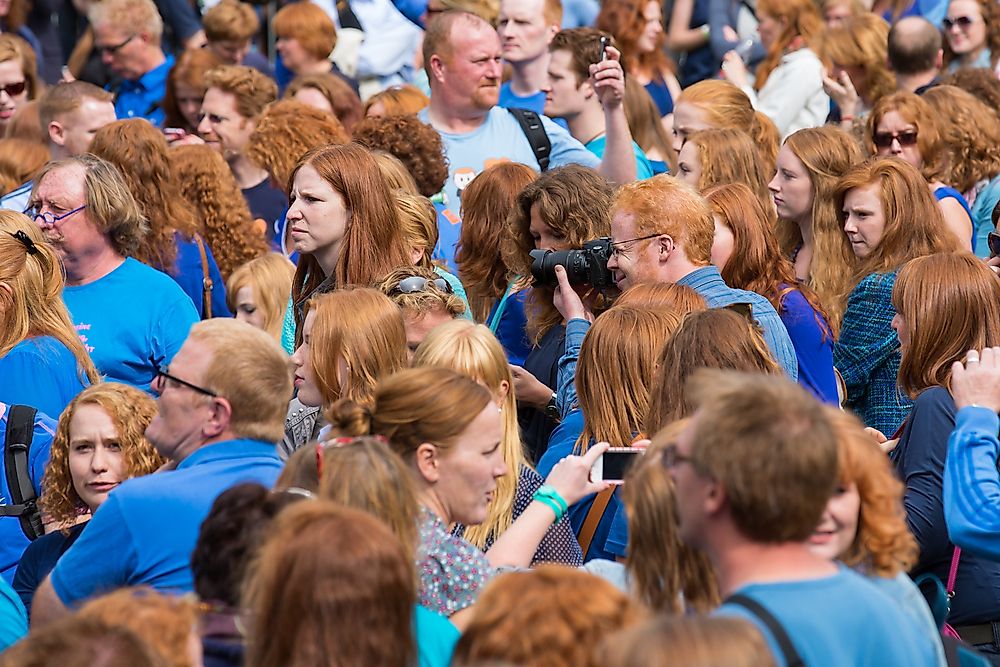Only 2 of the world s population has natural red hair

Only 2% of the world’s population has natural red hair.

Red hair has always been a source of fascination and intrigue. From fiery copper to strawberry blonde, redheads stand out in a crowd with their vibrant and rare hair color. While many may wish to sport this unique shade, only a small fraction of the global population is naturally blessed with red hair. Recent studies reveal that a mere 2% of the world’s population has the genetic disposition for this captivating trait.

The distinctive genetic variation that results in red hair is primarily found in individuals of northern and western European descent. This regional concentration can be attributed to the gene responsible for red hair, known as MC1R, which is more prevalent in those populations. The gene mutation causes a deviation in the production of melanin, the pigment responsible for hair color, resulting in the characteristic fiery hues.
Interestingly, red hair is a genetic trait that is more likely to be passed on by both parents. The chances of having a red-haired child increase when both parents carry the redhead gene, even if they do not have red hair themselves. This factor further contributes to the rarity of natural redheads in the world.
Despite its scarcity, red hair holds a certain allure that has captivated societies throughout history. From ancient myths and legends to modern-day pop culture, redheads have been associated with various traits and stereotypes. While many perceive redheads as fiery and hot-tempered, studies have debunked these misconceptions, revealing that they are just as diverse as individuals with any other hair color.
The uniqueness of red hair has also made it a subject of scientific research. Scientists have delved into the genetic factors behind red hair, seeking to unravel the mysteries of this fascinating trait. Beyond its aesthetic appeal, the study of red hair provides insights into human evolution, genetic variations, and the role of melanin in pigmentation.
Moreover, redheads have faced their fair share of challenges throughout history. The rarity of their hair color has sometimes led to discrimination, prejudice, or even fascination bordering on obsession. In certain cultures, redheads have been associated with superstitions or regarded as exotic. However, in recent years, redheads have embraced their distinctive beauty, using social media platforms to celebrate their hair color and foster a sense of community.
In conclusion, red hair remains a rarity in the world, with only 2% of the global population naturally possessing this captivating trait. Genetics play a significant role in the occurrence of red hair, with the MC1R gene mutation primarily found in individuals of northern and western European descent. The allure and uniqueness of red hair have sparked interest and research in various fields, shedding light on human genetics, evolution, and societal perceptions. Despite historical challenges, redheads are now embracing their distinct beauty and finding empowerment in their hair color.
Source: BBC - The Fascinating Story of How the World Turned Red
Share
Related Posts
Quick Links
Legal Stuff

